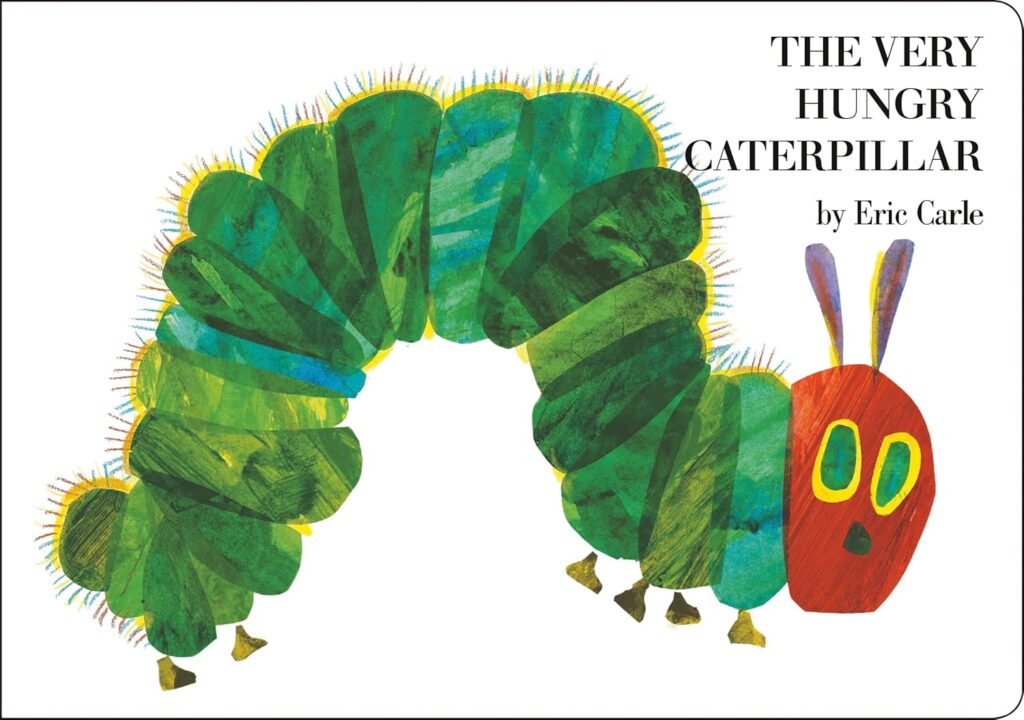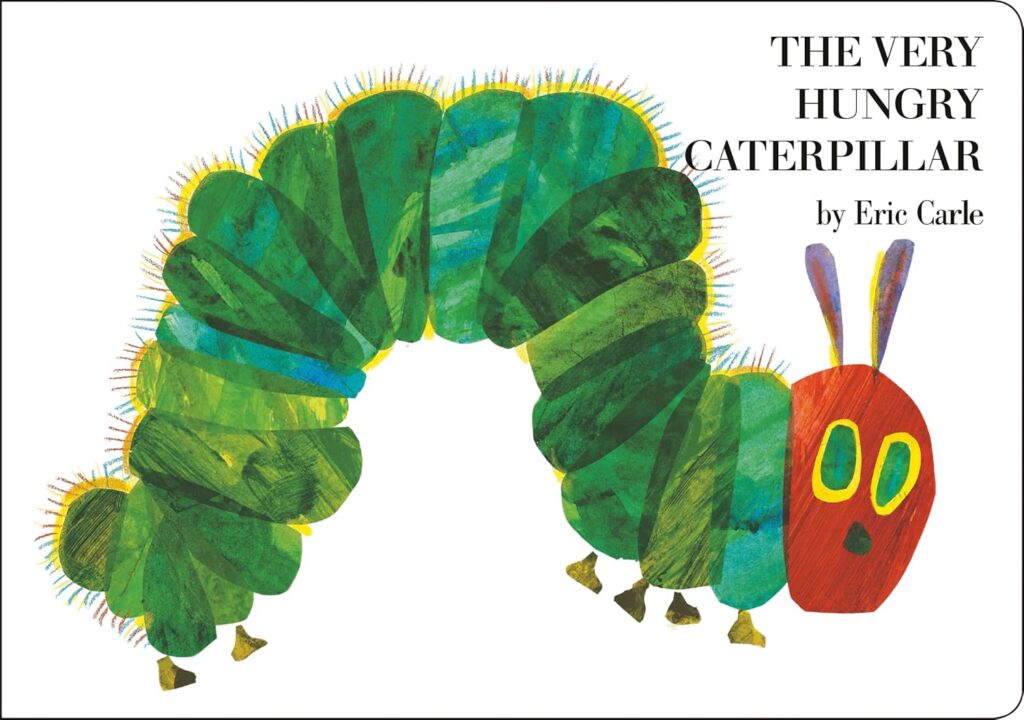Introduction
Eric Carle’s The Very Hungry Caterpillar is one of the most beloved children’s books of all time. Since its publication in 1969, the book has remained a staple in early childhood education and literature, capturing the hearts of children, parents, and educators alike. Known for its unique illustrations, engaging storytelling, and interactive design, the book has been translated into over 60 languages and sold millions of copies worldwide. This review explores the various elements that make The Very Hungry Caterpillar a timeless classic, including its narrative structure, educational significance, artistic appeal, and enduring cultural impact.

Plot Summary
The book follows the journey of a tiny caterpillar who emerges from an egg and embarks on a week-long feeding frenzy. The caterpillar starts with simple foods like fruit but soon indulges in a variety of treats, including cake, ice cream, and pickles. By the end of the week, the caterpillar experiences a stomachache from overeating, leading to a period of rest inside a cocoon. Eventually, the caterpillar undergoes metamorphosis and emerges as a beautiful butterfly.
Though the storyline is simple, it is rich in educational elements, introducing young readers to concepts such as numbers, days of the week, healthy eating habits, and the life cycle of a butterfly.
Themes and Educational Value
One of the most remarkable aspects of The Very Hungry Caterpillar is its ability to convey multiple educational themes through a simple yet engaging narrative. Some of the key themes include:
1. Growth and Transformation
At its core, the book is a story of transformation. The caterpillar’s journey from hatching to metamorphosis serves as an accessible and visually captivating way to introduce young readers to the concept of life cycles in nature. This theme resonates with children as they, too, undergo their own stages of development and change.
2. Early Learning Concepts
The book serves as an effective educational tool for teaching:
- Counting: The caterpillar eats an increasing number of food items each day, reinforcing counting skills.
- Days of the Week: By tracking what the caterpillar eats each day, children develop an understanding of time and sequencing.
- Nutrition: The book subtly introduces the concept of healthy eating. The caterpillar begins by eating nutritious fruits but later experiences discomfort after consuming unhealthy foods, highlighting the importance of balanced eating habits.
3. Cause and Effect
Children learn about cause and effect through the caterpillar’s actions. The excessive eating leads to a stomachache, demonstrating a direct consequence of overindulgence. This lesson helps young readers develop early critical thinking skills.
Artistic Style and Illustrations
Eric Carle’s distinctive artistic style is one of the most celebrated aspects of the book. Carle used a collage technique, layering hand-painted papers to create textured, vibrant images. This method gives the illustrations a unique, handcrafted appearance that adds to their charm.
The book’s design is also highly interactive. The die-cut holes in the pages, which allow children to see where the caterpillar has eaten through different foods, add a tactile element to the reading experience. This interactivity makes the book especially engaging for young readers and helps develop fine motor skills.
The color choices in the illustrations are bright and inviting, designed to capture a child’s attention while also stimulating their visual development. Carle’s use of bold, primary colors and simple yet expressive shapes ensures that the story is visually appealing and easy for children to understand.
Cultural Impact and Legacy
Over the decades, The Very Hungry Caterpillar has become more than just a book—it has become a cultural phenomenon. Its influence extends beyond literature into areas such as education, psychology, and even social movements advocating for early childhood literacy.
1. Influence on Early Childhood Education
Educators frequently use The Very Hungry Caterpillar as a teaching tool in classrooms around the world. The book is often incorporated into lesson plans focusing on:
- Literacy and language development
- Science and nature studies (particularly the butterfly life cycle)
- Math skills (counting and sequencing)
Its repetitive structure and predictable pattern make it an excellent choice for beginner readers, helping them recognize words and build confidence in their reading skills.
2. Psychological and Developmental Benefits
The book is often recommended by child psychologists and educators for its ability to support emotional and cognitive development. The transformation of the caterpillar can serve as a metaphor for personal growth, encouraging children to embrace change and new experiences. The book’s interactive nature also supports sensory learning, which is particularly beneficial for children with developmental delays or learning differences.
3. Pop Culture and Media
The book has been adapted into various forms of media, including animated shorts, educational apps, and even stage performances. It has been referenced in television shows, public service campaigns, and literacy programs worldwide. The image of the caterpillar has become iconic, appearing on merchandise ranging from toys and clothing to classroom decorations and educational materials.
Criticisms and Limitations
While The Very Hungry Caterpillar is widely celebrated, some critics have pointed out certain limitations. For example:
- The book follows a Western diet, which may not reflect the eating habits of children in different cultures.
- Some educators believe that the book could place more emphasis on scientific accuracy, particularly in the depiction of the butterfly’s metamorphosis.
- The simplicity of the text, while beneficial for young readers, may not be as engaging for older children.
Despite these minor critiques, the book’s universal appeal and educational value remain unparalleled.
Conclusion
The Very Hungry Caterpillar is more than just a picture book—it is an invaluable educational tool and a literary treasure. Through its engaging storytelling, rich illustrations, and interactive elements, Eric Carle has created a masterpiece that has stood the test of time. The book not only entertains but also educates, making it a must-have for every child’s library.
With its enduring legacy, The Very Hungry Caterpillar continues to inspire generations of young readers, encouraging curiosity, creativity, and a love of learning. Whether read at bedtime, in the classroom, or as part of an educational program, this classic tale remains a source of joy and wonder for children and adults alike.

